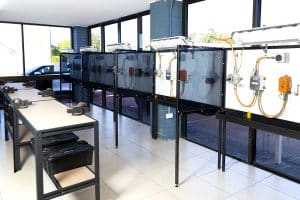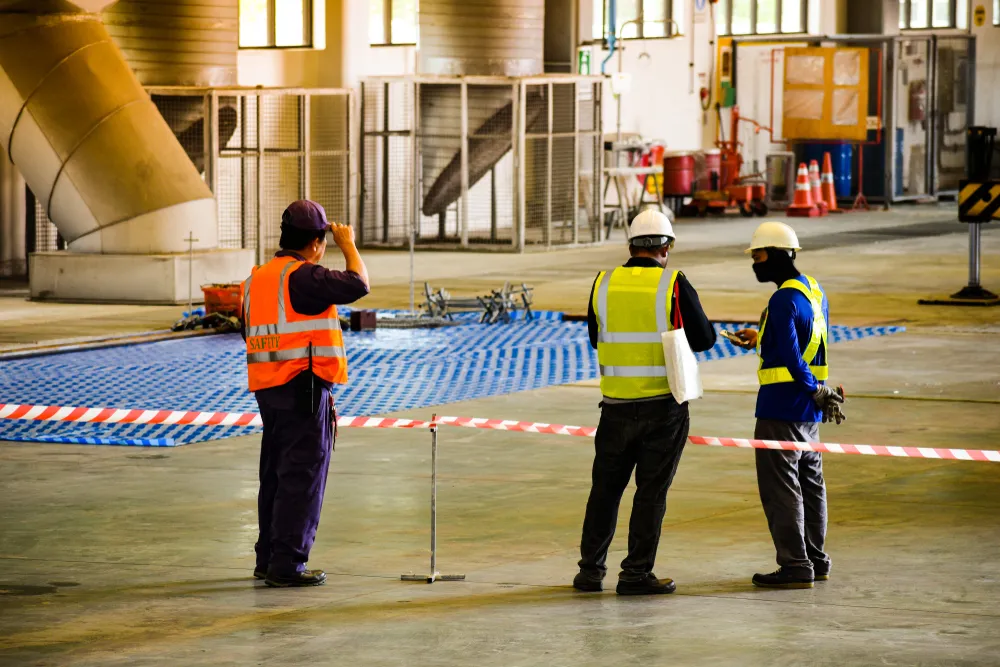Roar Solutions Things To Know Before You Get This
Roar Solutions Things To Know Before You Get This
Blog Article
The 5-Minute Rule for Roar Solutions
Table of ContentsRoar Solutions for BeginnersGetting The Roar Solutions To WorkAll about Roar Solutions
In order to secure setups from a possible surge an approach of analysing and classifying a possibly hazardous location is required. The purpose of this is to make certain the proper option and installment of tools to inevitably avoid a surge and to make certain safety of life.
(https://www.cheaperseeker.com/u/roarsolutions)
No devices ought to be installed where the surface temperature level of the equipment is above the ignition temperature of the provided risk. Below are some usual dirt harmful and their minimal ignition temperature level. Coal Dirt 380C 225C Polythene 420C (melts) Methyl Cellulose 420C 320C Starch 460C 435C Flour 490C 340C Sugar 490C 460C Grain Dirt 510C 300C Phenolic Material 530C > 450C Aluminium 590C > 450C PVC 700C > 450C Soot 810C 570C The likelihood of the threat being existing in a focus high sufficient to trigger an ignition will certainly vary from area to place.
Dangerous area electric devices possibly made for usage in higher ambient temperatures. Field Repair Work By Authorised Personnel: Difficult screening may not be needed nonetheless details procedures might need to be followed in order for the tools to maintain its third celebration score. Each piece of equipment with a hazardous ranking must be assessed separately.
See This Report on Roar Solutions
The equipment register is a detailed database of tools records that includes a minimum collection of areas to determine each item's location, technological parameters, Ex-spouse category, age, and ecological information. This info is crucial for tracking and handling the tools properly within hazardous locations. On the other hand, for routine or RBI tasting evaluations, the quality will be a mix of In-depth and Close inspections. The proportion of In-depth to Close inspections will certainly be established by the Devices Danger, which is analyzed based upon ignition risk (the possibility of a resource of ignition versus the possibility of a combustible atmosphere )and the harmful location category
( Area 0, 1, or 2). This variant will certainly additionally influence the resourcing demands for job preparation. As soon as Lots are defined, you can establish tasting strategies based upon the example size of each Lot, which describes the variety of random equipment items to be evaluated. To establish the needed example dimension, two aspects require to be assessed: the dimension of the Great deal and the classification of evaluation, which suggests the degree of effort that must be applied( minimized, regular, or boosted )to the inspection of the Whole lot. By integrating the classification of inspection with the Great deal size, you can after that establish the proper denial standards for an example, indicating the allowable variety of malfunctioning things discovered within that example. For even more information on this process, please refer to the Power Institute Guidelines. The IEC 60079 typical advises that the maximum period between inspections should not go beyond 3 years. EEHA examinations will certainly also be conducted beyond RBI projects as component of scheduled upkeep and equipment overhauls or repair work. These evaluations can be credited toward the RBI example sizes within the influenced Whole lots. EEHA examinations are performed to determine faults in electrical equipment. A heavy racking up system is crucial, as a solitary tool may have numerous faults, each with varying degrees of ignition threat. If the combined score of both examinations is much less than twice the mistake score, the Lot is deemed acceptable. If the Whole lot is still taken into consideration undesirable, it needs to undergo a full examination or reason, which may cause stricter evaluation protocols. Accepted Lot: The reasons of any mistakes are recognized. If a typical failing mode is discovered, extra devices may call for maintenance. Faults are classified by extent( Security, Honesty, Home cleaning ), guaranteeing that urgent issues are assessed and addressed immediately to alleviate any type of influence on safety and security or operations. The EEHA database must track and tape the lifecycle of faults in addition to the rehabilitative activities taken. Implementing a durable Risk-Based Assessment( RBI )approach is vital for making sure conformity and security in handling Electric Tools in Hazardous Areas( EEHA) (electrical refresher course). Automated Mistake Scoring and Lifecycle Management: Easily manage mistakes and track their lifecycle to improve evaluation accuracy. The introduction of this assistance for risk-based evaluation better strengthens Inspectivity's setting as a best-in-class service for regulatory conformity, as well as for any type of asset-centric examination usage situation. If you want discovering more, we invite you to request a demonstration and find how our remedy can transform your EEHA monitoring processes.
4 Simple Techniques For Roar Solutions

In regards to eruptive risk, a harmful location is a setting in which an eruptive atmosphere is present (or might be anticipated to be existing) in quantities that need special preventative measures for the building, setup and use devices. hazardous area electrical course. In this article we explore the challenges faced in the work environment, the risk control measures, and the needed proficiencies to function safely
It is a consequence of contemporary life that we make, save or deal with a variety of gases or fluids that are considered combustible, and a variety of dusts that are regarded combustible. These substances can, in particular problems, develop explosive atmospheres and these can have major and check it out awful effects. A lot of us are familiar with the fire triangular get rid of any kind of one of the 3 elements and the fire can not take place, but what does this mean in the context of harmful areas? When breaking this down into its most basic terms it is basically: a mix of a certain amount of launch or leak of a certain compound or product, combining with ambient oxygen, and the existence of a resource of ignition.
In a lot of circumstances, we can do little about the degrees of oxygen in the air, yet we can have considerable impact on sources of ignition, as an example electrical devices. Dangerous areas are recorded on the dangerous area classification illustration and are determined on-site by the triangular "EX LOVER" sign. Right here, among various other key info, areas are divided into three kinds depending upon the threat, the chance and period that an explosive ambience will certainly exist; Zone 0 or 20 is considered the most harmful and Zone 2 or 22 is considered the least.
Report this page